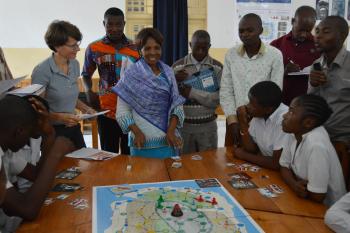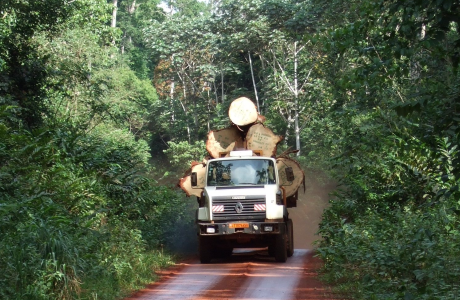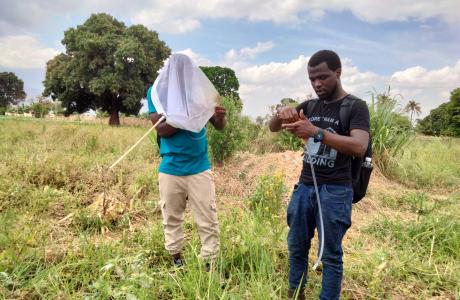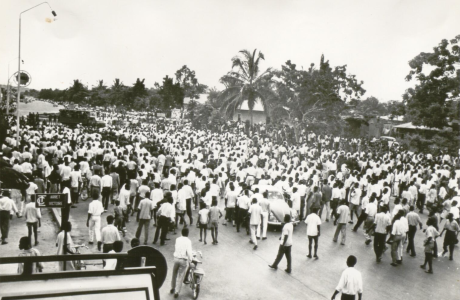International Women's Day
On 8 March, we celebrate International Women's Day. To mark the occasion, we'd like to pay special attention to all the museum's female colleagues and give them a voice. Caroline Michellier, who works at the Earth Sciences Department, tells us her story.

What field do you work in? How important is this field? Are there many women in this field?
I am a geographer by training. I am currently working on analysing the risks associated with geohydrological hazards in the specific context of Central Africa. I am particularly interested in the human component of risk, which corresponds to the exposure and vulnerability of populations and infrastructures. In addition, the study of risks requires a component to raise awareness in the communities that face them, so that our research has an impact in terms of disaster risk reduction. This component is also part of my work as a researcher.
What themes and research questions are you working on? Are gender issues important to the content of your research, to your research questions?
Within our Natural Hazards and Mapping department at the Royal Museum for Central Africa (commonly known as GeoRiskA), I am surrounded by several colleagues. We each have our own speciality and they all complement each other. Teamwork is at the heart of our approach. These colleagues are mostly men, but I'm hopeful that some female PhD students will continue their research careers and join us in the future. What's more, in other research teams focusing on the human component of risk, it's often women who are in charge!
What specific activities are you carrying out?
Gender is part of these studies, but not the main focus. It's important to have a holistic view of the communities we work with in order to understand the role of each individual and the influence he or she might have in terms of disaster risk reduction. In practical terms, when research is launched, it involves getting to know the community we are working with in depth, as well as understanding its living environment. To achieve this objective, which is a prerequisite for any risk analysis, it is essential to carry out surveys of the population (quantitative and qualitative) to gain a better understanding of their lifestyle, habits, the structure of their society and the threats they face. Another essential step is to engage in dialogue with the various players involved in disaster risk reduction; such a cross-disciplinary approach helps to enhance the impact of everyone's actions, for the benefit of the population at risk.
What motivates you, what attracts you to this activity?
To go beyond these research objectives, I had the opportunity to develop and contextualise risk awareness tools for young people in primary and secondary schools. These tools take the form of board games that give young people a better understanding of geohydrological hazards and their impacts, as well as all the associated risks. The exchanges and discussions during the game encourage young people who could be faced with such phenomena to become aware of these dangers and incorporate them into their daily lives.
What do you like about your work?
Disaster risk reduction is at the heart of my motivation to pursue this research, and to involve as many young researchers as possible. For me, being able to contribute to reducing the incidence of geohydrological hazards is a considerable added value to the research carried out in my department. I'm lucky enough to be passionate about my field of research, and I'm keen to share this interest with students from all backgrounds, researchers from outside this field, and also the communities with which I interact. So don't hesitate to contact me if you'd like to find out more!


